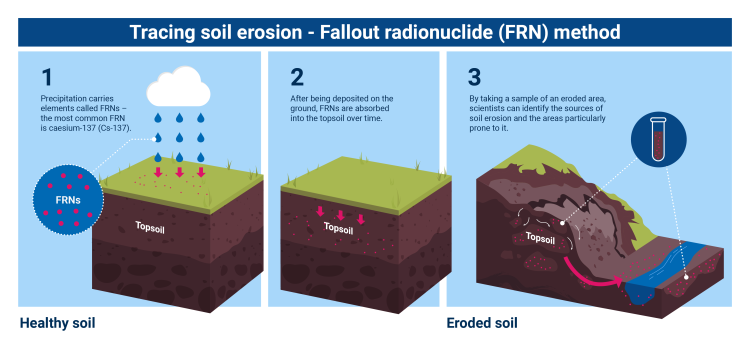Soil erosion, the most common type of land degradation, is a process that removes the upper layer of soil, from which plants get most of their nutrients and water. When this fertile layer, called the topsoil, slides away, the productivity of land decreases and farmers lose a vital resource for growing food.
Unlike the wind or the sun, soil is a finite, non-renewable resource, which is degrading at alarming rates. Different types of land degradation are affecting approximately 1.5 billion people, particularly in developing countries. But soil has an unexpected ally — nuclear science. Nuclear techniques can help experts better understand the causes and the mechanisms of soil erosion, identify erosion hotspots and assess the impact of various land management practices on erosion rates, in order to make soil more resilient to the effects of climate change and to protect soil for the future.
Using nuclear technology, such as the fallout radionuclide (FRN) technique and the compound specific stable isotope (CSSI) technique, the IAEA helps to assess soil erosion, so that the right strategies to protect soil can be implemented. Jointly with the Food and Agriculture Organization of the United Nations (FAO), the IAEA helps countries strengthen capacities in using nuclear and isotopic techniques to combat soil erosion, preserve soil resources and support sustainable agricultural production.










